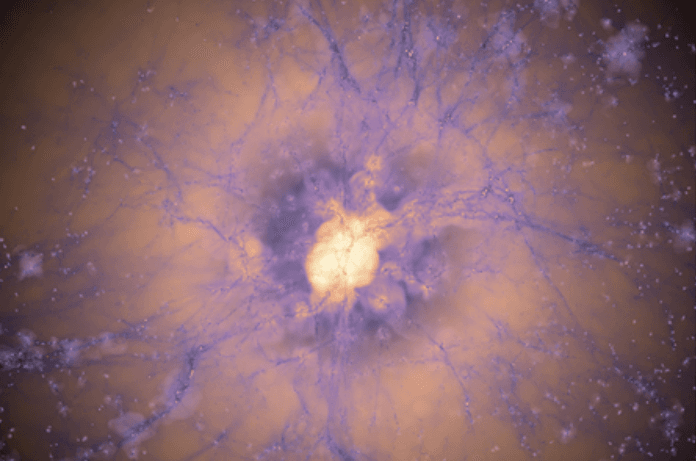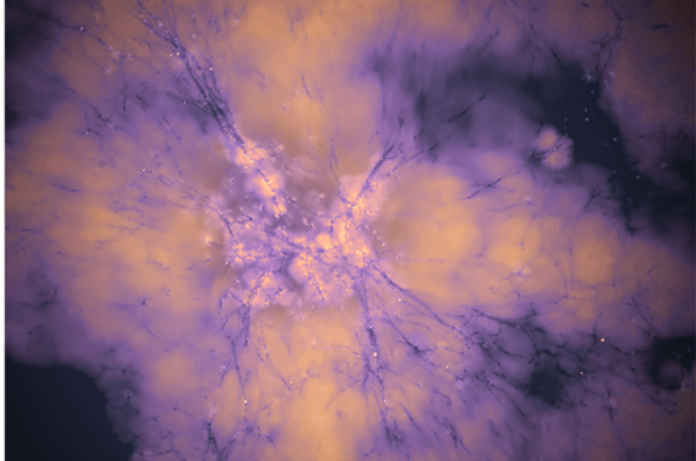This type of energy, believed to have had a brief impact on the cosmos following the Big Bang, may help explain why the universe is expanding at the current rate and why there were more massive galaxies in the early past than previously believed. According to the research, early dark energy may majorly impact early universe structures and increase the number of brilliant galaxies that develop in that time frame.
According to a recent study by MIT physicists, two of the most significant mysteries in cosmology may be resolved by a mysterious component known as early dark energy, which might also close some critical gaps in our knowledge of the evolution of the early universe.
The Cosmic Puzzles and Early Dark Energy
The “Hubble tension,” a discrepancy in measurements of the universe’s expansion rate, is one of the puzzles at hand. The other concerns are the findings of many early, brilliant galaxies that should have existed at a significantly lower population density in the early cosmos.

The MIT team has now shown that if early dark energy—a single, brief component—had been present in the early cosmos, both mysteries might have been addressed. Scientists believe that an as-yet-unidentified energy source called dark energy is responsible for the universe’s current expansion. Similarly, early dark energy is a theorized phenomenon that might have existed briefly and influenced the universe’s early expansion before completely vanishing.
Early Dark Energy’s Contribution to Early Universe Dynamics
The surprising quantity of brilliant galaxies that astronomers have discovered in the early cosmos may also be explained by early dark energy, according to research from MIT. The scientists modeled the development of galaxies in the first few hundred million years of the universe in their new study, published on September 13 in the Monthly Notices of the Royal Astronomical Society. The number of galaxies that emerged from the primordial environment grew to fit astronomers’ observations when they included a dark energy component solely in that initial slice of time.
According to co-author Rohan Naidu, a postdoc at MIT’s Kavli Institute for Astrophysics and Space Research, “You have these two looming open-ended puzzles.” We discover that, in actuality, early dark energy provides a very tasteful and restrained answer to two of cosmology’s most urgent issues.
Lead author Xuejian (Jacob) Shen, a postdoc at Kavli, and MIT physics professor Mark Vogelsberger are among the study’s co-authors. Other contributors include Michael Boylan-Kolchin from the University of Texas at Austin and Sandro Tacchella from the University of Cambridge.
Big City Lights
According to accepted theories of cosmology and galaxy formation, the universe should have taken its time forming the first galaxies. Primordial gas would have needed billions of years to combine to form galaxies the size and brightness of the Milky Way.
However, NASA’s James Webb Space Telescope (JWST) revealed an astonishing discovery in 2023. Reaching further back in time than any observatory, the telescope discovered, in the first 500 million years, when the universe was only 3% of its current age, a startling number of brilliant galaxies the size of the modern Milky Way.
The observations suggest to physicists that there is either a missing component in the early cosmos that scientists still need to explain or a fundamental flaw in the physics underpinning the models. The MIT group investigated the latter hypothesis and the idea that early dark energy could be the missing component.
According to scientific theories, early dark energy functions as a kind of antigravitational force that was only activated early in history. This force would reconcile the measurement discrepancy by opposing the inward pull of gravity and accelerating the universe’s early expansion. Thus, early dark energy is the most likely explanation for the Hubble tension.
Is “early dark energy” going to introduce a new type of dark energy into the mix?
It’s difficult to determine whether dark and early dark energy are the same or different because we need to know what they are. Though they are active at different epochs, the family of concepts we have established for early dark energy is essentially the same as those we have created for dark energy.
The cosmological constant is the most straightforward explanation for what is most widely called dark energy—a component of matter with the proper energy density and negative pressure needed to explain the observations. Furthermore, early dark energy differs from other forms of dark energy in that it is more significant in the early cosmos than in the later universe.
Returning to the topic of the Hubble tension, you mentioned that data from supernovae provide one measurement, and the cosmic microwave background provides the other. Could you elaborate on these two measurements?
The cosmic microwave background is the gaseous remnant of “relic radiation” from the Big Bang. We have measured the variations in that cosmic microwave background’s intensity, or temperature, over the whole sky. Additionally, we may deduce several cosmological parameters—the numerical values for the components in the standard cosmological model’s math—by modeling the physics that gives birth to those fluctuations.
These cosmic microwave background photos appear to be pictures of noise, yet the noise has specific properties that we can measure. Furthermore, according to our physics models, we can forecast the statistical properties of those changes in the cosmic microwave background. Additionally, we may determine several cosmological parameters, including the Hubble constant, by fitting the observations to the models.
Conclusion
We will eventually have a fundamental physics theory that integrates this comprehensive knowledge of strong, weak, and electromagnetic interactions with quantum gravity. Thus, eventually, we may have a model that performs that function and indicates, “Hey, there’s this extra new scalar field out there that will have precisely the properties you need for early dark energy.” Therefore, while it is theoretically possible, little income comes from that direction in real life.

